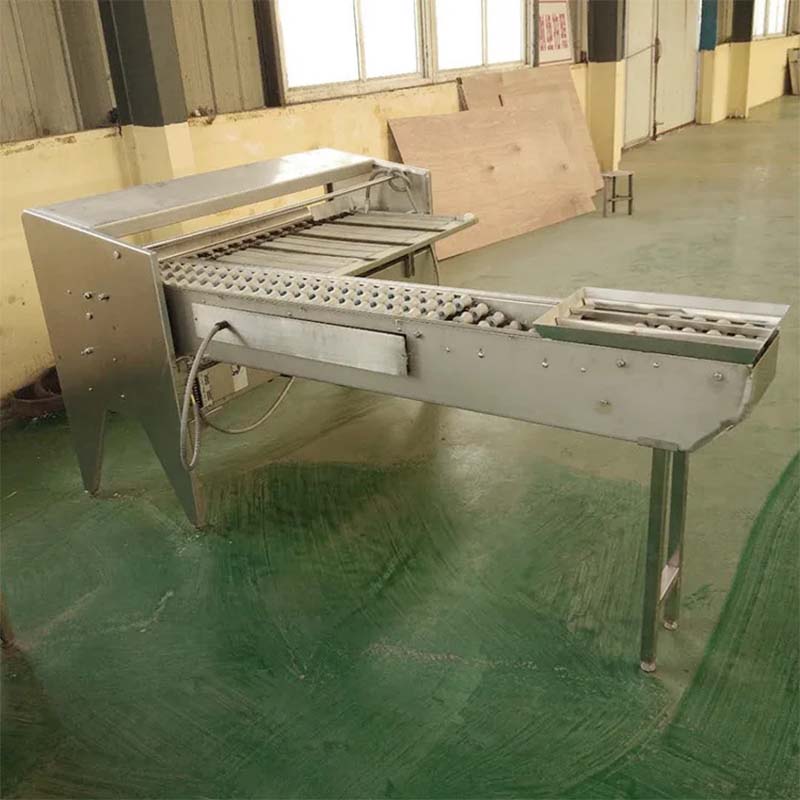Electric Chicken Scalding Machine for Efficient Poultry Processing and Quality Enhancement
Nov . 07, 2024 08:41 Back to list
Electric Chicken Scalding Machine for Efficient Poultry Processing and Quality Enhancement
The Electric Chicken Scalder Revolutionizing Poultry Processing
In the poultry processing industry, efficiency and hygiene are paramount. One of the pivotal steps in preparing chickens for consumption is scalding, which involves immersing birds in hot water to loosen feathers for easier plucking. Traditionally, this process was labor-intensive and often inconsistent; however, the advent of the electric chicken scalder has transformed the way poultry is processed, providing significant benefits in terms of speed, effectiveness, and sanitary conditions.
The electric chicken scalder functions on a relatively straightforward principle it heats water to an optimal temperature that facilitates feather removal while preserving the quality of the meat. The ideal scalding temperature typically ranges from 140°F to 160°F (60°C to 71°C), depending on the specific requirements and the type of poultry being processed. This precision is crucial, as both under-scalding and over-scalding can lead to undesirable outcomes. Under-scalding may result in difficult feather removal, while over-scalding can cause skin damage and loss of meat quality.
One of the primary advantages of electric chicken scalders is their ability to maintain consistent temperatures throughout the scalding process. This uniformity not only improves the efficiency of feather removal but also enhances the overall quality of the processed birds. With traditional methods, fluctuations in temperature often occurred due to manual handling, leading to variability in the finished product. Automated electric scalding systems, on the other hand, utilize advanced technology to monitor and adjust water temperatures in real-time, ensuring optimal conditions throughout the entire scalding cycle.
Moreover, electric scalders are designed with hygiene in mind. In an industry where food safety is paramount, contamination risks must be minimized. Electric chicken scalders often feature closed-loop systems that recycle and filter water, reducing the need for constant water replacement and lowering the risk of bacterial contamination. Enhanced sanitation protocols embedded in these systems contribute to improved food safety standards, reassuring consumers about the quality of the poultry they purchase.
electric chicken scalder

Beyond their operational efficiency and hygienic advantages, electric chicken scalders also contribute to enhanced productivity in processing plants. The speed at which scalding can be achieved allows facilities to process larger quantities of poultry in shorter timeframes, boosting overall output without sacrificing quality. This is particularly vital in meeting the demands of an ever-increasing global population that relies heavily on poultry for protein.
Electric scalders also offer environmental benefits compared to traditional scalding methods. By utilizing electric power, these machines can be more energy-efficient, and when paired with renewable energy sources, they can significantly reduce the carbon footprint associated with poultry processing. Furthermore, improved water management systems lead to lower water consumption, addressing concerns about water scarcity in many regions.
However, transitioning to electric chicken scalders may require initial investment and training for existing employees. Plant owners must weigh these upfront costs against the long-term benefits of increased efficiency, better product quality, and enhanced safety standards. Fortunately, many manufacturers provide comprehensive training and support to ensure a smooth transition, allowing processors to fully harness the advantages brought by modern technology.
In conclusion, the electric chicken scalder stands as a testament to innovation in the poultry processing industry. By improving temperature control, enhancing hygiene, increasing productivity, and contributing to environmental sustainability, this technology is revolutionizing how chickens are prepared for consumers. As the demands of the global poultry market continue to rise, electric chicken scalders represent a forward-thinking solution that meets these challenges head-on, ensuring that safety and quality remain the cornerstones of poultry processing. As processors embrace this technology, we can anticipate a future where poultry products not only meet but exceed consumer expectations for quality, safety, and sustainability.
-
Hot Sale 24 & 18 Door Rabbit Cages - Premium Breeding Solutions
NewsJul.25,2025
-
Automatic Feeding Line System Pan Feeder Nipple Drinker - Anping County Yize Metal Products Co., Ltd.
NewsJul.21,2025
-
Automatic Feeding Line System Pan Feeder Nipple Drinker - Anping County Yize Metal Products Co., Ltd.
NewsJul.21,2025
-
Automatic Feeding Line System - Anping Yize | Precision & Nipple
NewsJul.21,2025
-
Automatic Feeding Line System - Anping Yize | Precision & Nipple
NewsJul.21,2025
-
Automatic Feeding Line System-Anping County Yize Metal Products Co., Ltd.|Efficient Feed Distribution&Customized Animal Farming Solutions
NewsJul.21,2025






